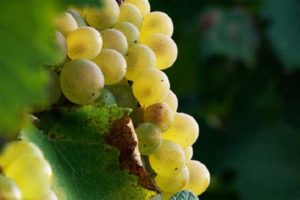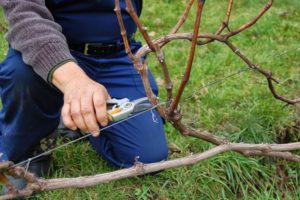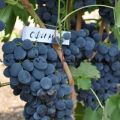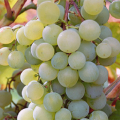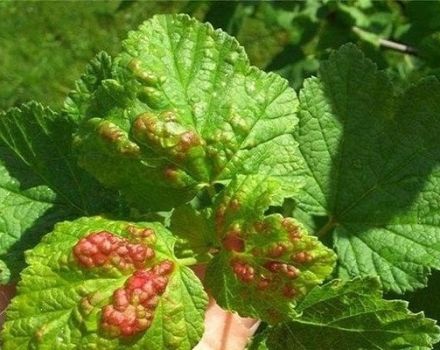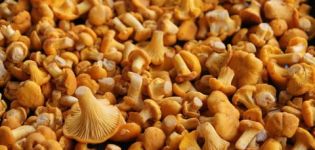The timing of the ripening of the grape vine and how to process it to speed up the process
Many novice winegrowers do not fully possess the skills of cultivating varieties, they need advice or tips. It is not easy to understand the intricacies of the case, to understand all the nuances. The prepared thematic material will help to master the art of creating favorable conditions for ripening vines on grapes.
Determine the ripening period of fruits by varieties
The main rule of the grower is that each variety has its own specific ripening period. Therefore, the types of shrubs are classified according to several main characteristics, on which care, its volume and timing will depend:
- Productivity. There are varieties of high yielding, low yielding and record holders.
- Resistant to weather conditions. Grapes originally grew in the south, most of the species continue to be cultivated in warm climates, while there are hybrids artificially adapted for the northern regions.
- Susceptibility to diseases and pests. Different in most varieties - from extreme insensitivity to complete effeminacy.
- Appointment. Table, technical and universal grapes (this also includes decorative).
The list can be continued by adding breeding methods, berry taste, transport tolerance and others. With regard to the timing of ripening, the month in which the bunches ripen, the berries are divided into ultra-early, super-early, early-middle, medium, medium-late, late and very late.
Each species has its own undeniable advantages, by default, medium and late varieties are sweeter than early ones. But sometimes breeders develop hybrids that combine excellent taste and rapid maturation.
The grape variety is "tied" to the region in which it will be grown: the late ones will never be able to ripen in the short Siberian summer, moreover, they will not survive the cold test in winter.
Of the early types, the most popular are Aleshenkin, Arcadia, White miracle, Zilga, Moscow White, Victoria, Early Vavilova, Kesha, Decorative and Muscat Shasla. From the middle - Kishmish, Gift to Zaporozhye, Nadezhda AZOS.Late varieties - Moldova, December, Karaburnu, Taifi and others.

An experienced winegrower varies varieties on his site, alternates them in order to harvest berries of different shapes, tastes, colors, and purposes during the warm season. Therefore, residents of the southern regions of the Russian Federation, with long summers and mild winters, are in a more advantageous position.
Super early
This category includes varieties that ripen in 105 days. The countdown begins from the moment the central buds bloom, the full period depends on the air temperature, weather, humidity. In hot, arid climates, berries ripen worse than in relatively cold climates. The main advantage of such species is that they are guaranteed to ripen and yield a harvest. And most of the problems (pests and diseases) with them can be safely avoided.
Very early
Ripen in the period from 105 to 115 days, suitable for the Middle Lane. Such varieties will be in demand, as they bear fruit among the first, serving delicious, aromatic berries on the table.
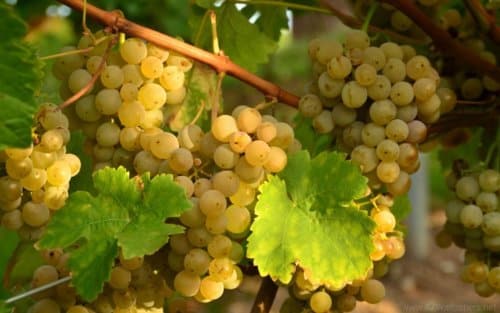
Early
Early grapes have a growing season of 115-120 days, this is enough for the bunches to decorate with sweet ripe fruits at the end of July. The spread in color, berry size, bouquet is great - there is plenty to choose from.
Early-middle
An intermediate category that includes species with vegetation periods of 120 to 125 days. It includes Aleshenkin, Bogatyrsky, Karamol, Bucharest Muscat and others.
Average
These include varieties that ripen in the time interval from 125 to 135 days. These are Armenia, Aelita, Beige, Voskhod, Primorsky - more than 5 dozen items in total.

Late
A number of different, not similar to each other, types of grape berries round out the late varieties. They sing the slowest of all - 135 days and longer. There are many tasty, sweet, unique varieties in this category, but they are most susceptible to classic grape diseases and require careful maintenance.
These include Agadai, Dniester pink, Isabella, Tair, Jubilee of Moldova. They can grow in the southern regions, in others they will not have enough time to ripen.

Factors affecting berry ripening
This is undoubtedly the sun, air and water. Everything should be in moderation, to a greater extent it concerns watering and wind. The grapes are sensitive to waterlogging, the roots will simply rot, and constant drafts will cause a "runny nose" in the vine - the buds will develop poorly. Without knowing these subtleties, the harvest cannot be reaped.
Correct placement of vineyard rows
When planting on a large scale, the bushes are placed in such a way that they do not interfere with each other's development, do not shade the sun. Different cultivars have different requirements as they can grow upward, sideways, or both at the same time. There are no universal solutions, you will have to look for clues in relation to the selected species in order to provide the plant with optimal development conditions.

Sometimes mint is planted near the grapes - its tart smell repels aphids. It is allowed to place bushes near the walls of buildings to protect the seedlings from drafts.
How to speed up the ripening process of grapes
This section is not for those who like dangerous experiments and all kinds of "improvements". It will not work to make an ultra-early variety from a late variety, otherwise the breeders would not have been painstakingly working for decades to create adapted hybrids, crossing different varieties.
You can influence the growth process of the vine if you choose the planting site correctly, feed the bush, prune and suppress the attempts of pests to settle on the grapes. Mulching, covering, banding, soil replacement (partial or complete), pinching are also used.
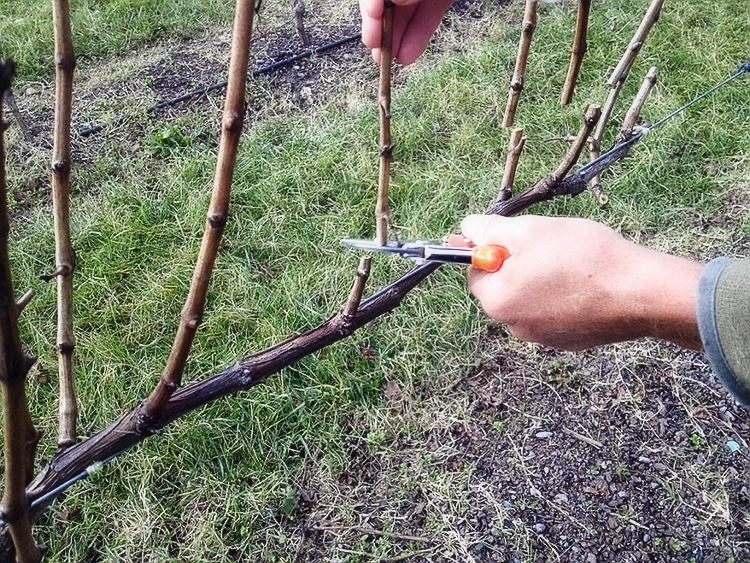
Spring procedures
In the spring, there is a movement of juices in the vine, the buds wake up from hibernation. It is very important to "push" the plant to further development, to help it gain strength and start actively developing.In the southern regions, they start at the end of February and beginning of March, in the Middle Strip - in April. Before sap flow, pruning is performed, this applies to varieties that are not sheltered for the winter.
In more severe regions, in April, they begin to open the vine, removing it from under the layer of sawdust, peat and needles. Be sure to remove dead, weak and old areas. For grapes over 2 years of age, pruning is performed radically, removing more than half of the buds and shoots.
You should get several shoots from last year with healthy ovaries. As soon as "overboard" during the week will be 10 degrees, the vine begins to "cry", actively excrete juice. It will last from 14 to 21 days. When frozen on the soil, sap flow is extended over time, the growth processes slow down.
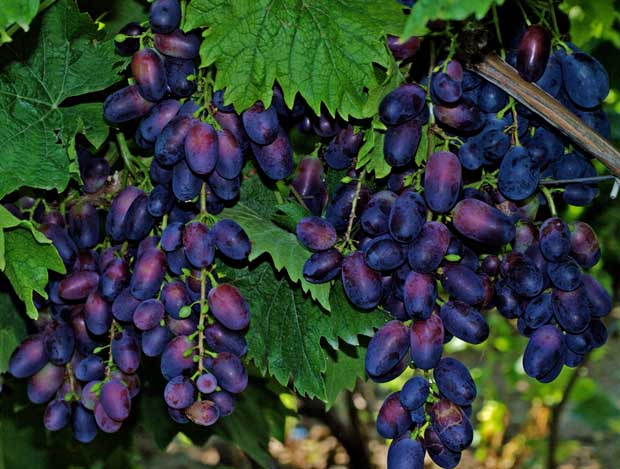
The successful completion of the "crying" is evidenced by the pecking of the buds, the development of the first shoots. If there is experience in pruning, during this period the "extra" buds are ruthlessly removed so that the vine can feed the rest. In the second half of April, the garter begins: the sleeves are oriented at an angle, the shoots are oriented vertically.
In the same period, young bushes are planted. In May, the vine is thinned out again, breaking off double and triple shoots (growing from one bud) so that only one remains. The procedure is sequentially repeated when the sprouts reach a length of 15-20, and then 35-40 centimeters.
Throughout May, they form the crown, removing the stepsons and all the sprouts coming from the rhizome: this way the most viable, strong ones will remain, which will give strong, ripe bunches. In addition to these, measures are taken to feed the vine with mineral complexes. A suitable period for this is the first half of April.

Organics are suitable for future planting of young grapes. The spring season is favorable for the prevention of diseases: the bushes are sprayed with chemical solutions.
Soil mixing
Grapes do not like heavy, clayey soils. Therefore, when planting, they practice mixing soil with humus, sand, compost, depending on the condition of the site. Drainage must be placed on the bottom - stones, crushed stone, bricks. The resulting "cake" from the earthen mixture should be air and moisture permeable - this way the vine will grow better.
Pruning
Includes "selection" of shoots, bunches or individual berries with signs of underdevelopment, diseases, defects. Allows you to increase the chances of surviving, accelerate their maturation.
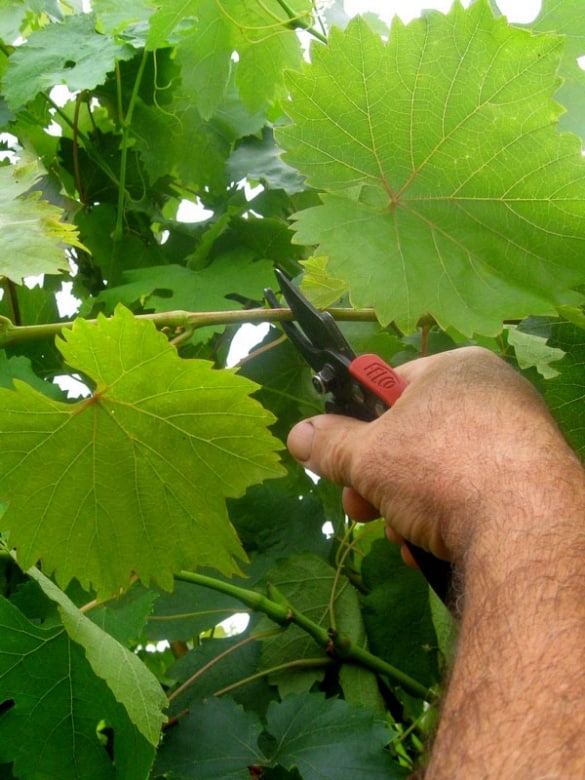
Ringing the vine
The ringing method is used to accelerate the ripening of berries, to stimulate sap flow. It consists in performing a cross-cut along the vine in a certain place with a sharp knife so that a narrow strip of bark is obtained. It is usually carried out in early spring, before the bush finally wakes up.
Pinching stepsons
To avoid the growth of "extra" branches and to rejuvenate the vine, pinching of stepchildren is used. The procedure is carried out immediately after their appearance, removing the selected shoots. Good for medium-fast grapes.
Breaking off shoots
This is not about total destruction, but about the removal of non-viable, weak shoots. Otherwise, they will pull juices from the vine and interfere with the development of other parts of the plant. For late species, it is an integral stage of processing.
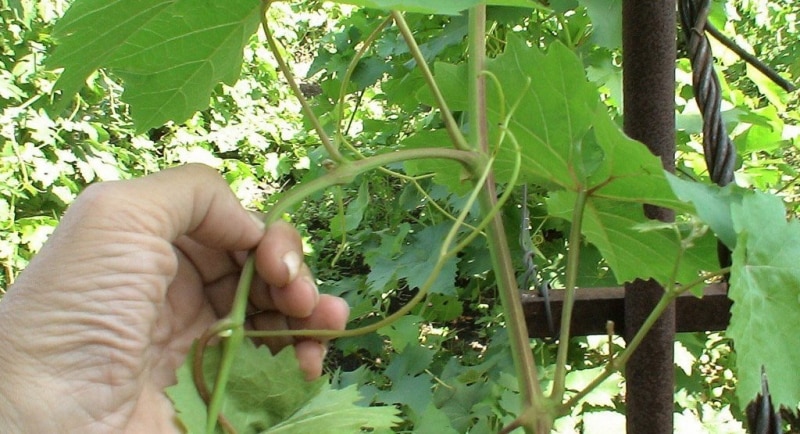
Summer treatments
In July, and especially in August, they continue to actively care for the grapes, regulating watering, applying pinching, fertilizing and chemistry treatment against pests and diseases.
Timely reduction of watering of grapes
The amount of liquid is reduced after the first decade of July: this way you can significantly accelerate the ripening of berries and bring the harvest closer. If this is not done, the plant will form ovaries and fruits slowly, slowly, guided by its internal calendar.
Stepping
When the vine has sprouted fresh shoots, which have grown and developed into stepchildren, they begin to thinning. All shoots that are not involved in the development of the crop are removed. This is done between July and August.

Summer processing
Summer is the time of active reproduction of pests, the appearance of diseases on the leaves and berries. Processing includes pickling grapes at the first signs of gray rot, powdery mildew, insects. Both chemical and folk remedies are used: soda, potassium permanganate.
Foliar dressing to accelerate the ripeness of gron
Many experienced growers successfully use root zone feeding, adding fertilizers under the stem. Not everyone knows that spraying at the end of summer (in August) with a weak infusion of wood ash or a solution of potassium monophosphate acts on ripening bunches as a stimulant.

Chasing shoots
To stop the growth of greens and let the juices go for the development of berries, chasing shoots is used: for this, the tops are cut off on them (approximately at the level of 15 leaves).
Removing excess gron
In abundantly fruiting grape varieties, as a necessary measure, the removal of "extra" bunches is used - shading, sick, undeveloped. If this is not done, the mother plant will try to feed all the groves, grow each berry, which, unfortunately, is not always possible.
Autumn procedures
Novice gardeners often ask what to do in the fall, besides harvesting. On the last warm days, the vineyard is mulched, freed from heavy bunches, dead branches are removed and prepared for winter. In the same period, for late varieties, growth stimulants are used, which accelerate the ripening of berries.
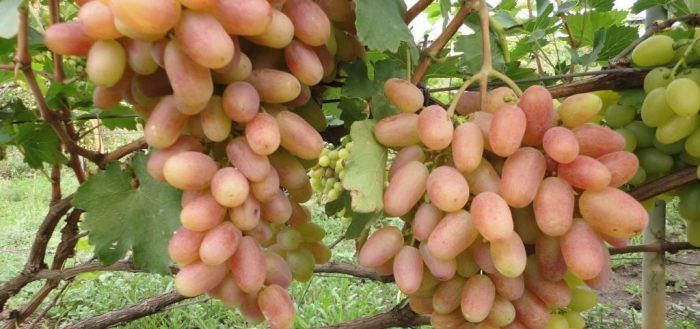
Partial removal of berries
The measure is forced, but necessary. Especially for the Middle Strip, where the weather is not warm. On individual shoots, the upper clusters are removed so that the most powerful, heavy ones remain. Further, on the groins, the berries are carefully examined and weak, unformed ones are cut out.
Mulching and insulation
It is very important for grapes to maintain a constant temperature balance in the root zone. Therefore, it is mulched with peat, humus, foliage, covered with a thick film (black can be used), burlap.
How to fertilize gron to accelerate ripeness
For a quick but even ripening of berries, there is nothing better than the sun, warm weather and moderate watering. If it is not possible to ensure the presence of all these components in full, mineral stimulants are used. They will come in handy to quickly get a harvest in the harsh climate of Siberia or the Urals.
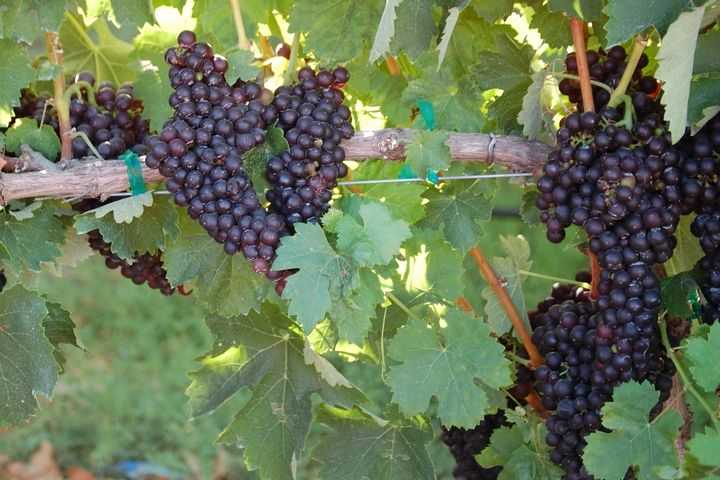
Phosphorus use
Phosphorus is very important for the nutrition of the vine, it is one of the main components that ensure its growth. The balance of the mineral in the soil is the key to flowering, normal ripening of berries in the clusters. A common mineral complex with a phosphorus content is superphosphate. It is used in the fall, watering the bush with an aqueous solution of fertilizer.
Ammonium molybdate
A solution of ammonium molybdenum is used for foliar and root feeding. It stimulates the growth and formation of ovaries, as it carries in a bound form one of the main components extremely important for grapes - nitrogen.
How to determine if the berries are ripe
To understand that the berries are ripe, it is not at all necessary to accurately calculate the growing season. It is enough to carry out a tasting: ripe grapes should have a rich, sweet taste, without the addition of parasitic components. Unripe berries can be bitter, tart, too sour.
The degree of ripeness is also easy to recognize by color: in the finally formed fruits, it fully corresponds to the description in the catalog, the directory of grape varieties.
